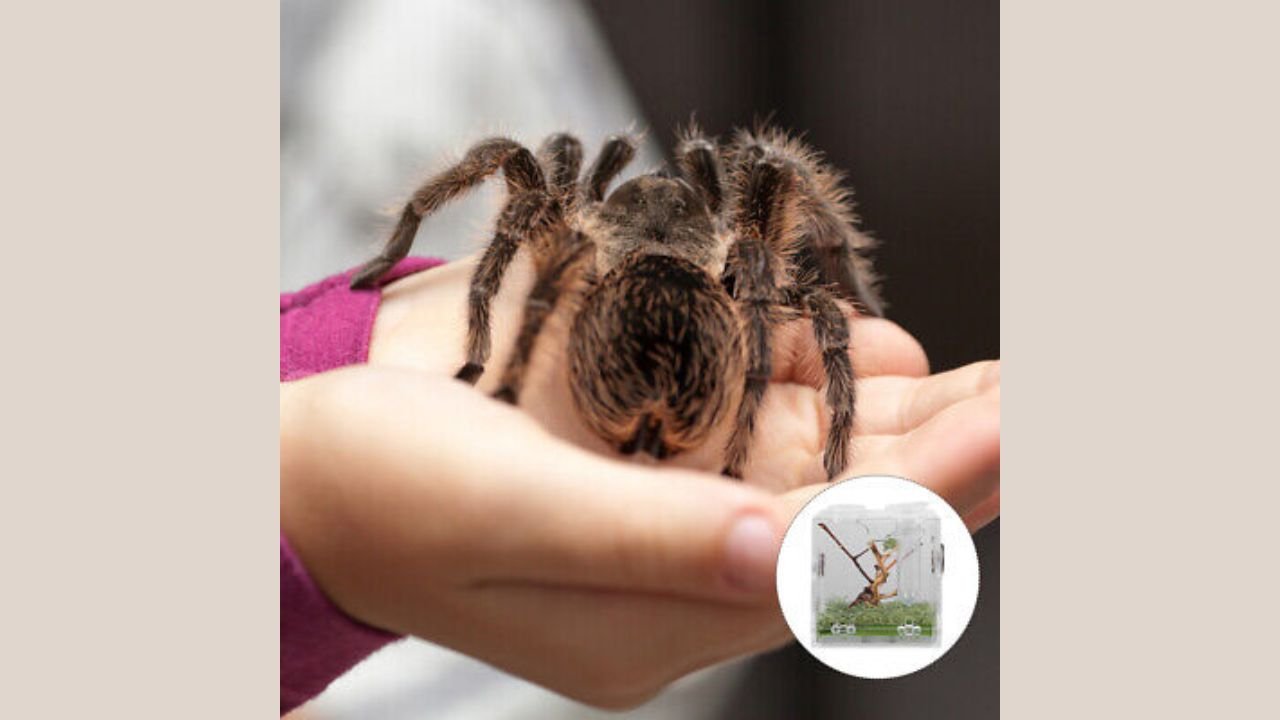Jumping spiders are fascinating pets with unique behaviors and striking personalities, making them increasingly popular among arachnid enthusiasts. Providing them with the right jumping spider enclosure is essential to ensure they thrive in captivity. But what exactly makes for a suitable enclosure? With an array of options available, choosing the perfect setup can feel overwhelming.
This guide will walk you through the different types of jumping spider enclosures, key features to look for, and step-by-step instructions to build an ideal habitat. Whether you’re a novice or a seasoned spider keeper, this article will help you create the perfect home for your eight-legged companion.
Types of Jumping Spider Enclosures
Understanding the available enclosure types is the first step toward creating a comfortable habitat. Below, we break down the most popular styles and setups for jumping spiders.
Terrariums vs. Acrylic Enclosures
Terrariums
- Typically made of glass
- Excellent visibility and durability
- Ideal for hobbyists who enjoy observing their spiders closely
- Often equipped with ventilation panels
Acrylic Enclosures
- Lightweight and easier to move
- Resist breakage better than glass
- Offer customizable sizing options
- Perfect for people with limited space
Open or Closed Enclosures
Open-Top Enclosures
- Provide excellent ventilation
- Mimic a more natural environment
- May require careful observation to prevent escapes
Closed-Top Enclosures
- Controlled environment perfect for maintaining humidity
- Prevent escape risks entirely
- Require built-in ventilation to ensure adequate airflow
Bioactive Setups
A bioactive enclosure mimics natural ecosystems by incorporating live plants, beneficial insects (like springtails), and natural substrates. This type of setup creates a visually stunning habitat that also provides environmental enrichment for your spider. Bioactive enclosures are ideal for hobbyists looking to elevate the aesthetic and sustainability of their spider’s home.
Key Features to Consider in a Jumping Spider Enclosure
To create a safe and enriching environment, these are the main factors to evaluate when selecting or setting up an enclosure.
Size and Height
Jumping spiders are active explorers. Choose an enclosure that’s spacious enough to accommodate climbing, jumping, and hiding. A minimum size of 8 x 8 x 12 inches is recommended. Height is particularly critical, as these spiders love vertical space for climbing and web-building.
Ventilation and Humidity
Good ventilation is essential to prevent mold growth and maintain air quality. Ensure that the enclosure includes mesh panels or ventilation holes. Simultaneously, manage humidity levels—jumping spiders prefer moderate humidity environments, around 50-60%.
Substrate Options and Decor
The substrate forms the base of the enclosure. Popular choices include:
- Coconut fiber
- Moss
- Paper towels for easy cleaning
Decor provides climbing, hiding, and webbing opportunities for the spider. Add elements such as small branches, miniature plants (real or artificial), and cork bark to mimic their natural habitat.
Setting Up the Perfect Jumping Spider Enclosure
Here’s a step-by-step guide for setting up a safe and enjoyable environment for your jumping spider.
Choose the Enclosure
Select an enclosure that is appropriately sized, well-ventilated, and escape-proof. Terrariums or acrylic enclosures with a secure lid are recommended.
Add the Substrate
Line the bottom of the enclosure with 1-2 inches of substrate. Natural options like coconut fiber or moss are ideal for bioactive setups and add aesthetic greenery.
Install Decor and Climbing Structures
Add branches, rocks, and bark for climbing. Arrange them to create layers, so your spider can jump from one structure to another with ease.
Include Hides and Water Source
Place small hiding spots like hollow wooden pieces to give the spider a place to retreat. A small bottle cap filled with fresh water misted daily is enough for hydration.
Insert Live Plants (Optional)
Optionally, add live plants to create a dynamic and lively ambiance, especially for bioactive setups. Make sure the plants are non-toxic to your spider.
Monitor and Adjust
Observe your spider’s behavior regularly to ensure the enclosure meets its needs. Adjust humidity, decor, or spacing as required.
Choosing the Right Enclosure for Your Spider
Considerations Specific to Spider Species
Different jumping spider species may have slightly different environmental or spatial needs. For instance, Phidippus regius (regal jumping spiders) might need taller enclosures for climbing, while Salticus scenicus (zebra spiders) thrive in smaller spaces with plenty of hiding options.
Observe Spider Behavior
Pay attention to your spider’s behavior over time. If it seems stressed, inactive, or spends excessive time trying to escape, consider adjusting ventilation, decor, or enclosure size accordingly.
You May Also Like: Fiskning Adventures Await Discover the Art of Sustainable Fishing
Conclusion
Creating a jumping spider enclosure isn’t just about functionality—it’s about offering your pet a home that aligns with their natural instincts while keeping things easy for you to maintain.
With the right enclosure and regular monitoring, you’ll not only improve your spider’s quality of life but also enjoy watching their fascinating behaviors up close.
Looking for more beginner tips or the perfect enclosure? Start your spider-owning adventure with confidence by browsing spider-keeping communities or consulting local pet stores.
FAQs
How big should a jumping spider enclosure be?
A minimum of 8 x 8 x 12 inches is recommended. Taller enclosures are ideal, as jumping spiders enjoy vertical climbing.
What kind of substrate should I use for a jumping spider enclosure?
Coconut fiber, moss, or even paper towels are commonly used as substrates. Bioactive setups can include natural soil mixed with springtails.
Do jumping spiders need live plants in their enclosures?
No, live plants are optional. While they enhance the aesthetic and create a natural ecosystem in bioactive setups, artificial decor also works well.
How do I maintain the humidity in the enclosure?
Mist the enclosure lightly every 1-2 days and monitor with a hygrometer. Ideal humidity is 50-60%. Make sure there’s adequate ventilation to prevent mold.
Can jumping spiders escape their enclosures easily?
Not if the enclosure is escape-proof. Use enclosures with a secure lid and fine mesh ventilation. Make sure openings are too small for the spider to pass through.











